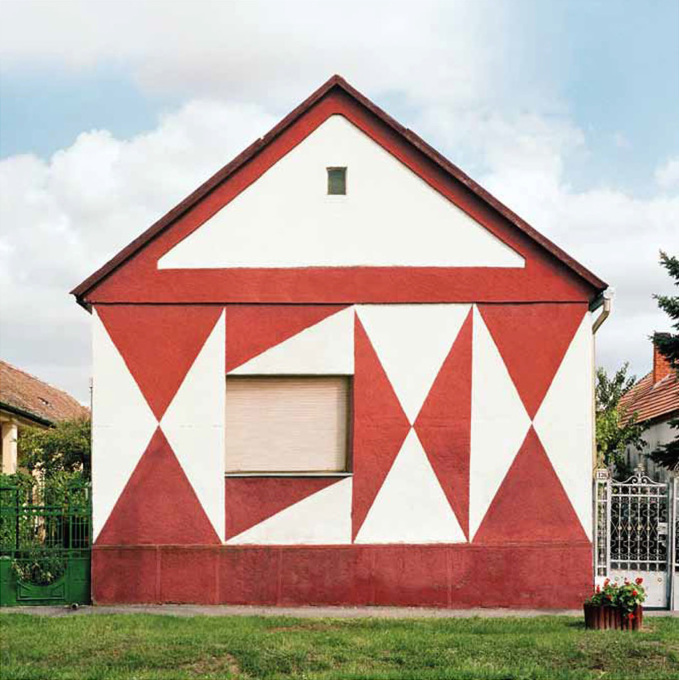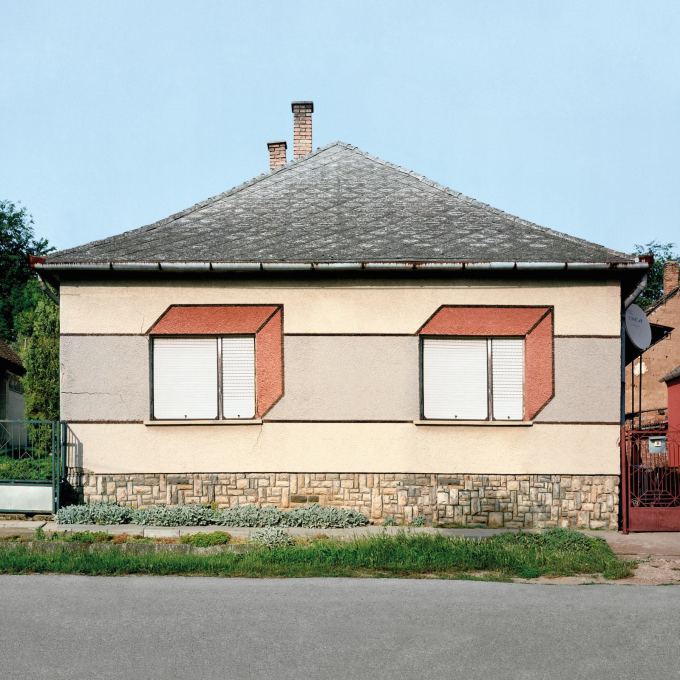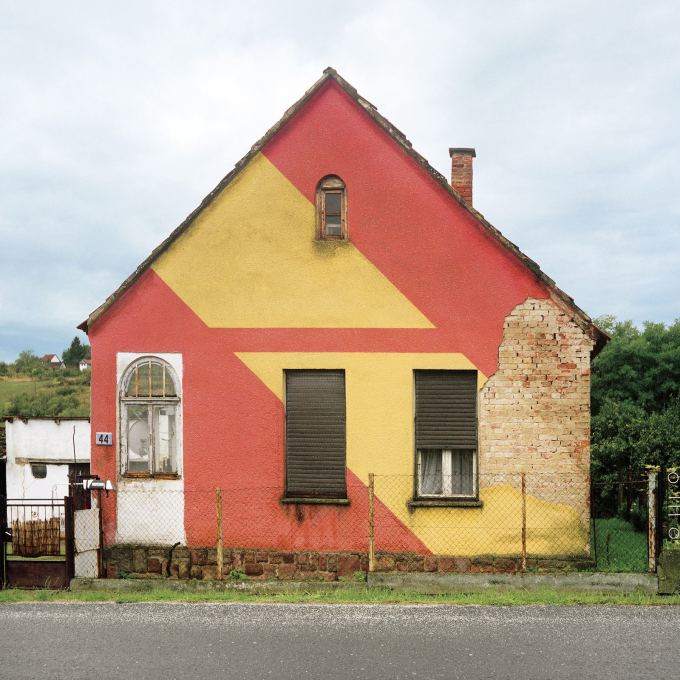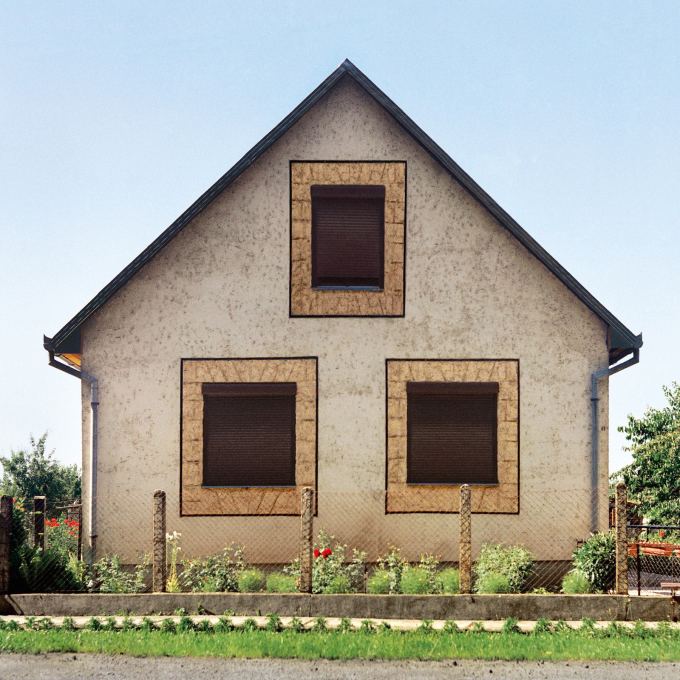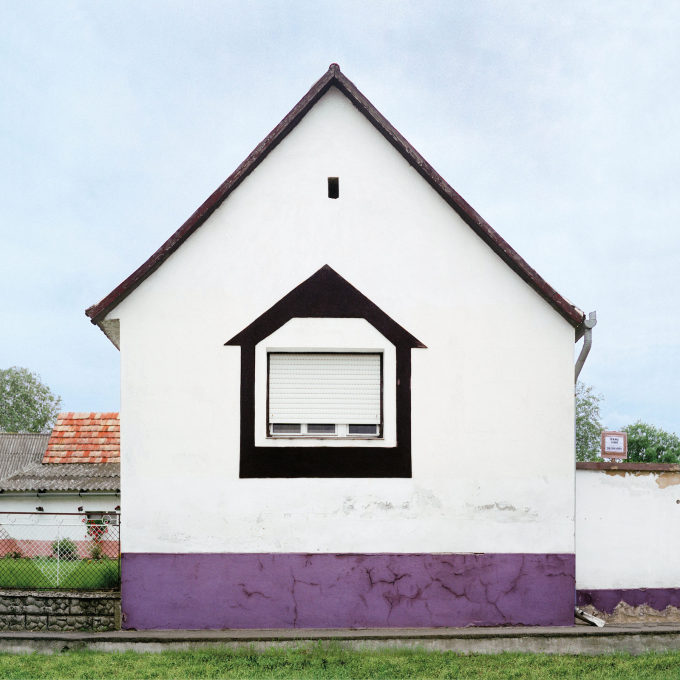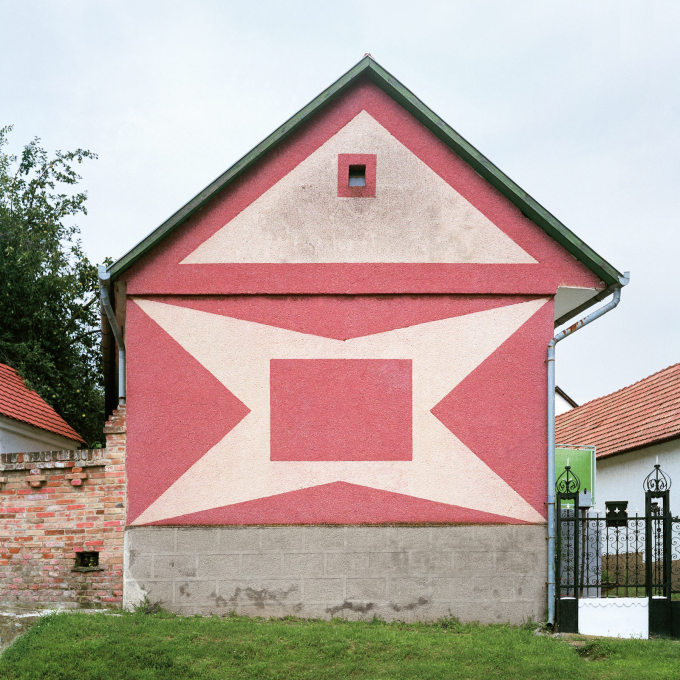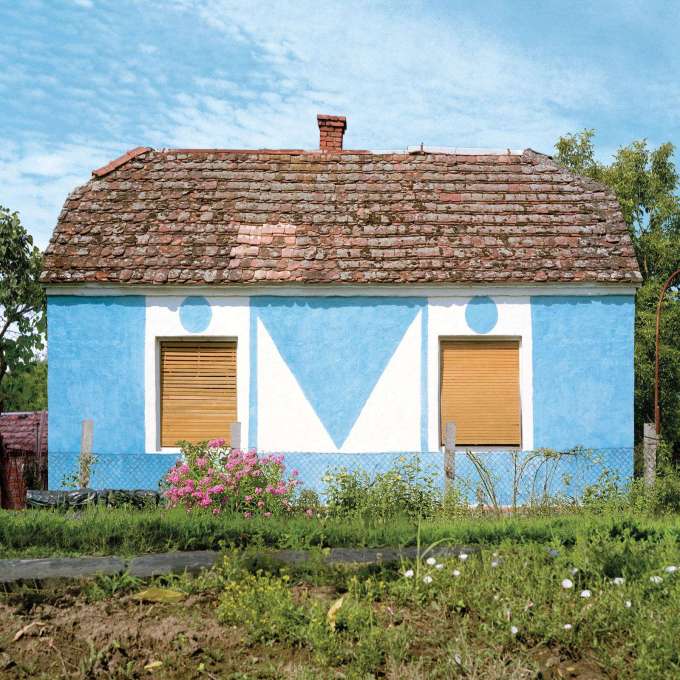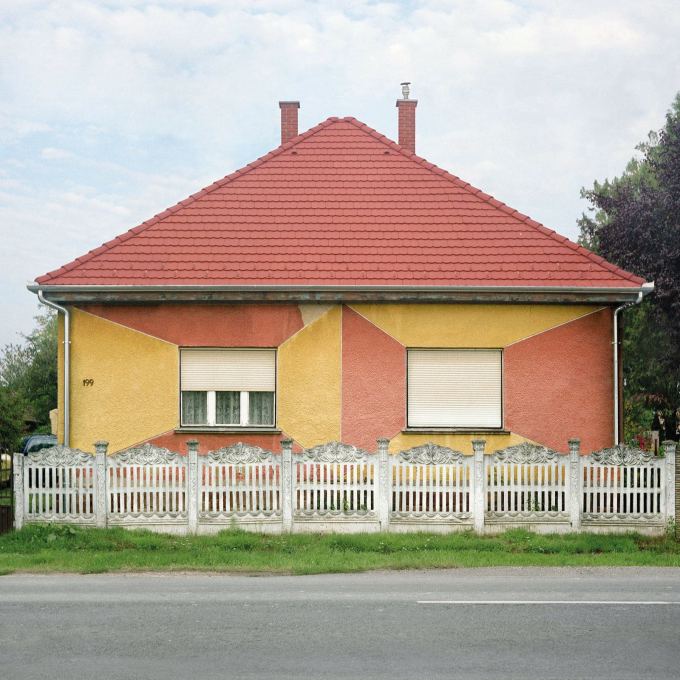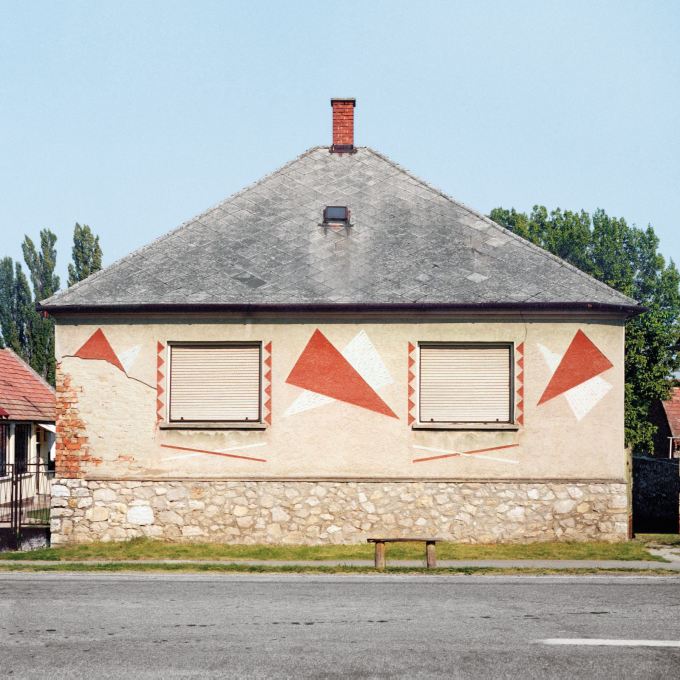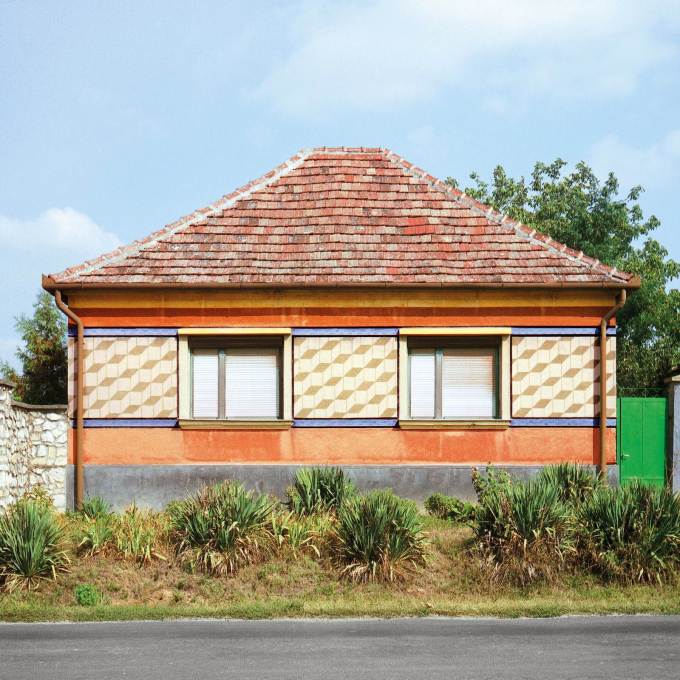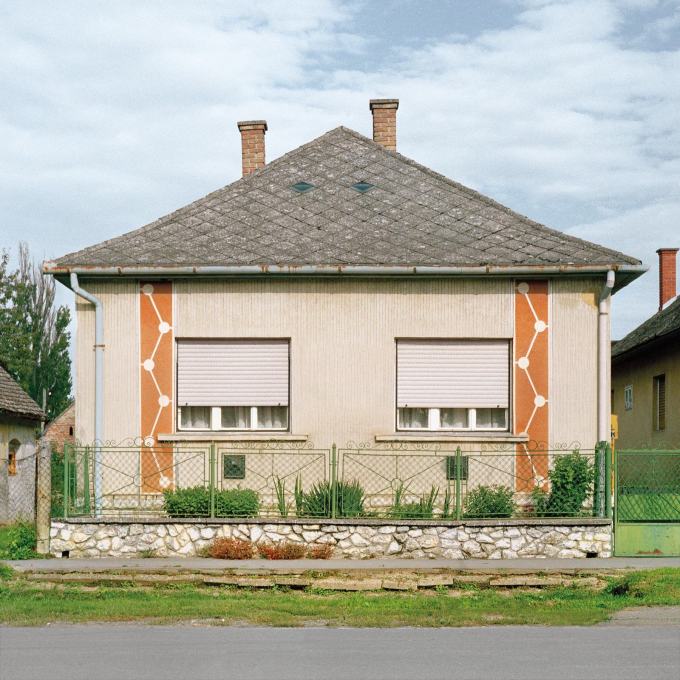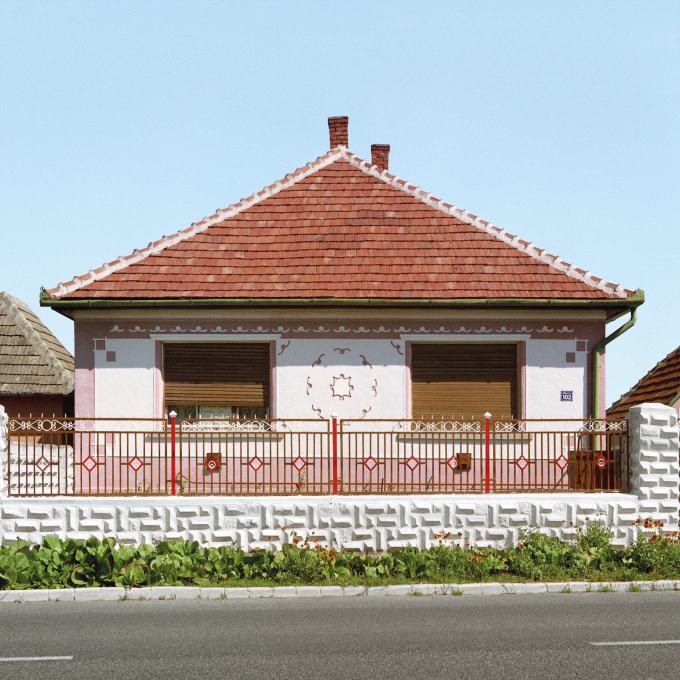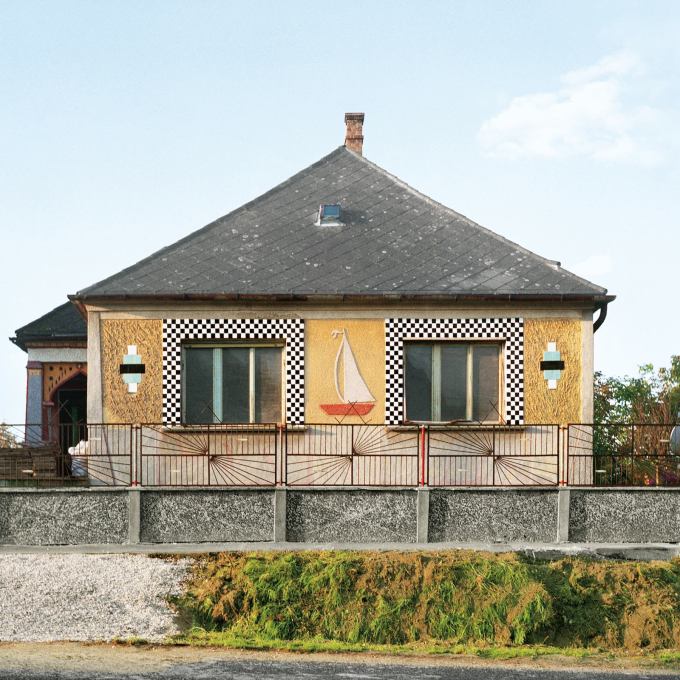Visual artist Katharina Roters has spent the last ten years documenting the abstract patterns decorating anonymous post-war house facades in Hungary, which are collectively nicknamed Magyar Kocka or “Hungarian Cubes”. A selection of her images has now been published in a new book and uncube seized the occasion to talk to Roters about her fascination with this “subversive” form of ornamentation during the Socialist era.
The Magyar Kocka single-family dwellings were built in and around the Hungarian suburbs from the 1920s onwards, but their construction boomed in the immediate post war period to meet the massive housing shortage that affected the whole of Europe. Indeed dwellings of a similar type can be found pretty much all over former Eastern Europe. Functional, plain, cheap and standardised, these shoe-box-like dwellings would be utterly anonymous were it not for their highly distinctive abstract façade ornamentation which looks like a cross between Victor Vasarely’s Op Art and Hungarian folk motifs.
What drew you to the idea of documenting these houses in the first place?
I took my first photos on account of their absurd beauty. What particularly drew my attention were the simple geometric patterns, which on occasion look like abstract paintings. In the digital post-processing, I eliminated all superfluous elements from the analogue photographs – power cables, tree branches, satellite dishes etc. Only in this way do these ornaments – transformed into “pure signs” – form their specific typology.
Does this facade typology belong to one particular region in Hungary?
The façade ornaments can be found throughout the country. Naturally there are areas with different styles and themes but until now there has been no comprehensive study made of them.
A lot of the houses seem to be maintained in good condition and have kept their original ornamental façades. Do the residents of the “Magyar Kocka” take particular pride in their homes?
The current situation with the houses is quite ambiguous. On one hand, the builder generation that built these homes still lives in them, thus, despite everything, the houses still represent to them the former modern prosperity and for this reason alone the houses are worthy of preservation.
For others, the “elite” of the county (with a few exceptions), the “Kádár Cubes” [an alternative nickname that steps from the name of Hungary’s communist leader from 1956-88, János Kádár] trigger a mixture of insensitivity and aggression. They are often referred to as “botched peasant/proletarian bastards” that are no more than “wounds” in the landscape.
Have any of the decorative the traditions been passed down to new generations living in the area? Are people still making such façades today?
For the younger rural population, these houses are simply out of date, so they either completely demolish them or rebuild and re-plaster them instead. Thus, over time, these houses are slowly but steadily disappearing – along with their façades.
Today, the Mediterranean architectural style is popular in the countryside. There are other ways of exercising self-expression and representation than with house façades. The ornamental phenomenon of this “cube house“ era seems to be hidden, like a blind spot in the eyes of the locals.
- Interview: Leigh Theodore Vlassis
Hungarian Cubes - Subversive Ornaments in Socialism
Katharina Roters
Pub. Park Books, 2014
Text English and German
ISBN 978-3-906027-43-2




